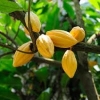Hi,
I have three questions related to the current topic:
1.1. How much of an impact does HEPPS have on the overall effectiveness of the combination? I am unable to obtain a suitable HEPPS. Will the remaining supplements have an impact? E.g. Are synergistic effects more than ~50% when combined?
1.2. Are there any alternatives to HEPPS that can be added?
3. better for a different thread: what else is synergistic to both the AZ and AP and can be added to address plaque.
Quote for Q1.1 and Q1.2:
The following in powder form can be used in fruit juice (measured doses are approximate as powders vary) —
HEPPS — 1 g (1/4 teaspoon. In the US this can be obtained from Amazon from 2 suppliers. I’ve used RPI. -- very strong disaggregation of Aβ.
Taurine — 10-15 g (2-3 teaspoons) -- reduction of Aβ, none of p-tau.
Carnosine — 3 g (1.5 teaspoon) -- strong effect on Aβ, none on p-tau.
Acetyl L-Carnitine — 1 g (1/2 teaspoon) -- inhibits p-tau.
Magnesium threonate — .5-1 g (1/4 teaspoon) -- strong effect on Aβ, none on p-tau.
The following are best in capsules (doses based on commonly available supplements) —
Olive Leaf extract 20% oleuropein — (two 500 mg caps) -- reduction of Aβ.
Olive Leaf extract 25% hydroxytyrosol — (one 100 mg cap) -- reduction of Aβ.
Dihydromyricetin — (one 350 mg cap) -- reduction of Aβ. The closely related myricetin has been found to act against p-tau.
Nicotinamide — (one 500 mg cap) -- reduction of p-tau.
Vitamin C — (one 500 mg cap or tablet)-- some decrease of p-tau, no effect on Aβ.
Glutathione — (one or two 250 mg gel caps, liposomal, CORE brand) -- Brain's master antioxidant.
Curcumin — (one 500 mg cap, liposomal, Meriva brand) -- Anti-Neuroinflammatory and blocks Aβ toxicity.
Quoting & Summarizing [Step1: https://www.ppt-heal...aque-protocol/]+ [Step2: https://www.ppt-heal...artery-plaque/]1. Remove the “rebar” – (the protein fibrin that helps hold things together.2. Lower the liquidity threshold. In order for chelation to be effective, the plaque has to be loosened up.3. Chelation nutrients – can now do their job and begin removing molecules of the plaque.Serrapeptase (70,080 SPU)Grapefruit Pectin (1,000 mg) - help reduce cholesterol absorption and production. the bile (holding cholesterol) is unable to be re-absorbed and is removed with the stool.Lecithin (900 mg) - helps fats dissolve in water making it easier for them to be removed from the bodyGuar Gum (400 mg) - supports grapefruit pectin and increases the antioxidants thereby decreasing oxidative stress.Garlic Extract (225 mg)L-Lysine (200 mg) - a high affinity for fats – especially lipid fatsGuggul Extract (175 mg) - helps prevent blood platelets from clumping
Quote for Q3:
other additions:
B3 -- is it wrong to take this with Nicotinamide?
Folic Acid
Nattokinase -- is this too much of a blood thinner with everything else?




























































